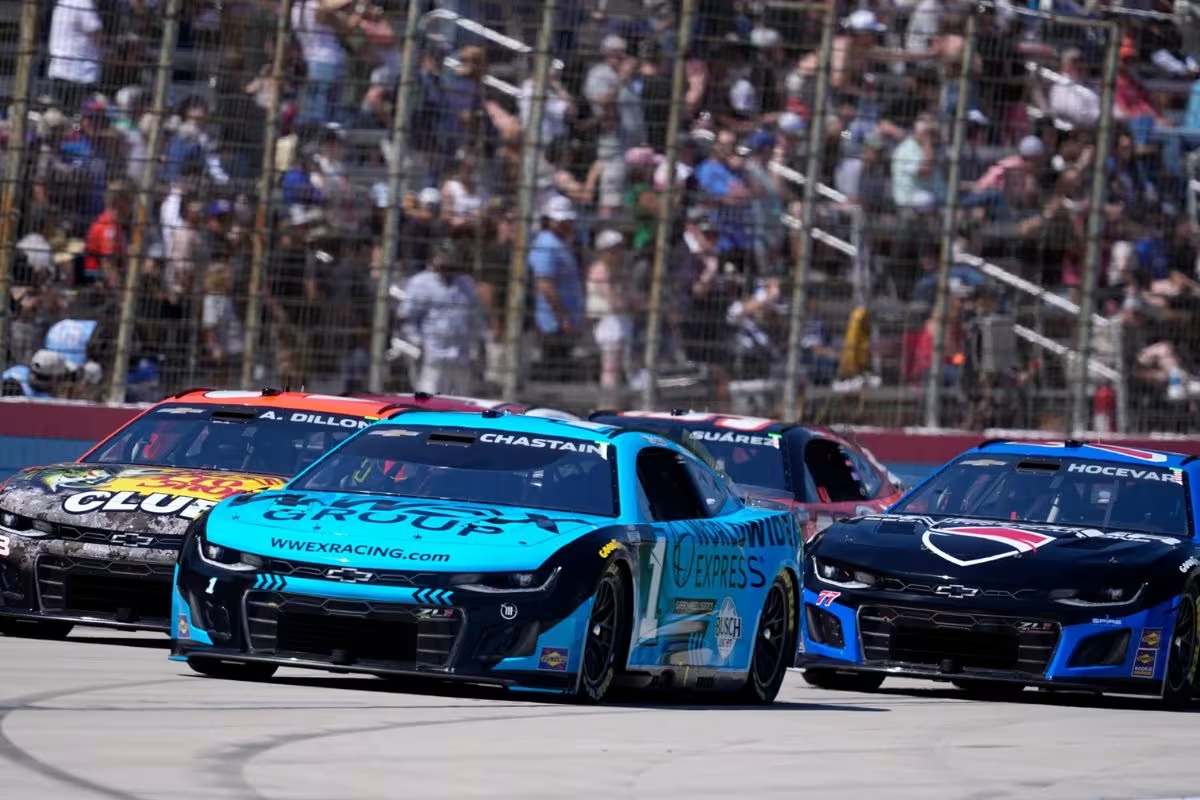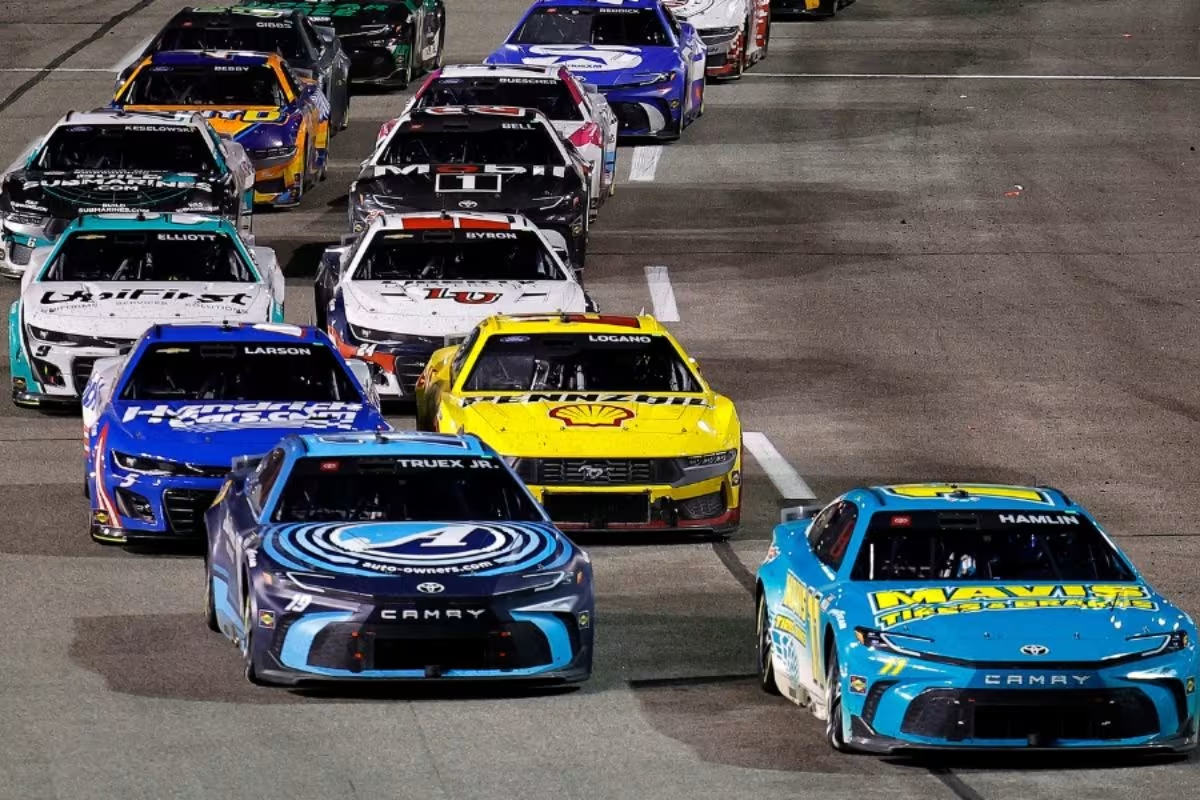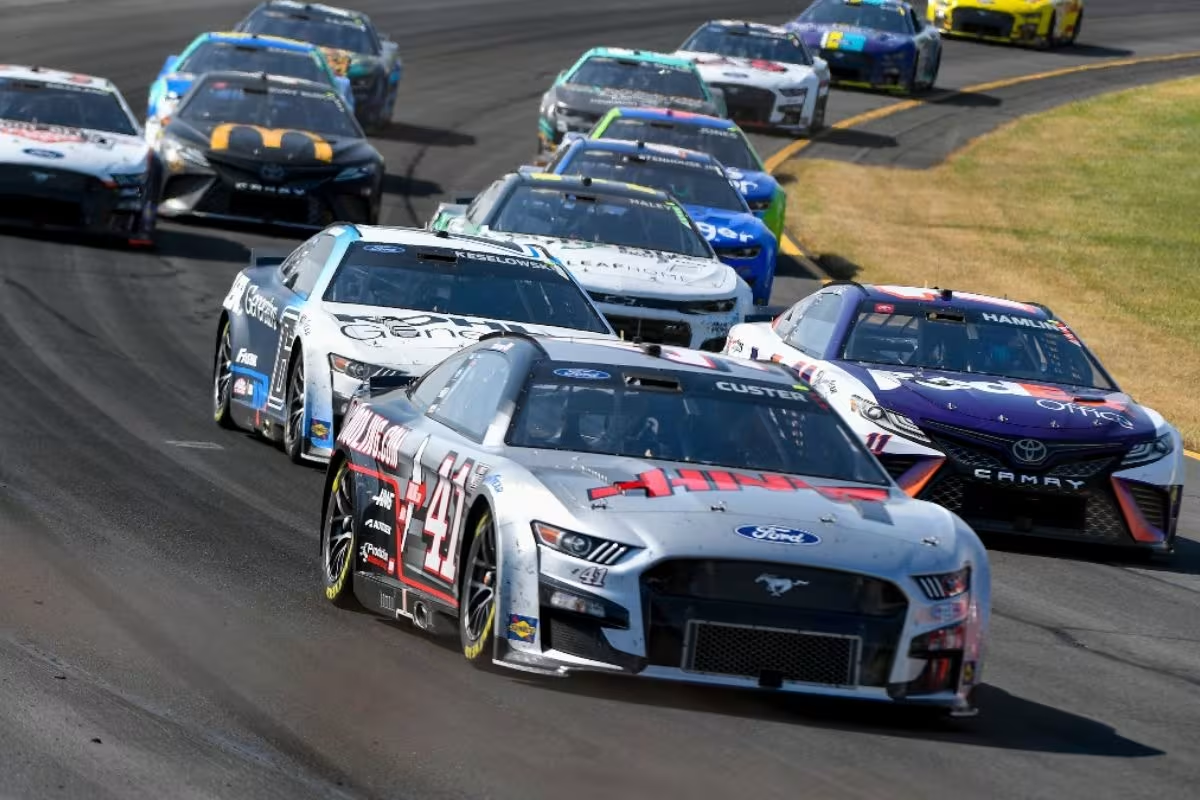NASCAR’s Latest Penalties and ROVAL Changes: NASCAR is shaking things up with new penalties and major changes to the Charlotte ROVAL! With stricter rules on road courses and a new layout, the race is set to be more exciting than ever. But will these updates lead to chaos or clear victories? As penalties get tougher and the track grows trickier, drivers are preparing for a wild ride.
Key Highlights
- Updated road course rules impose strict corner-cutting penalties, raising concerns among drivers about potential race infractions.
- Zero-tolerance policy on track limit violations means harsher penalties for minor infractions, increasing anxiety among competitors.
- New stop-and-go and pass-through penalties require precise execution, adding pressure during high-stakes racing situations.
- The introduction of post-race time penalties for late infractions compounds stress, affecting overall race strategies.
- Modifications to courses like the Charlotte Roval necessitate adaptive strategies, intensifying fear of unintentional penalties during competition.
Importance of Rules in NASCAR
Rules are an essential part of NASCAR, making sure that the competition stays fair and organized in a sport where every second counts. Racing is intense, and having strong rules helps prevent chaos and keeps everything running smoothly. The recent wild race at Talladega showed just how important these rules are in managing the unpredictable nature of the sport.
Rules do more than just govern; they create a level playing field. This allows drivers and teams to compete based on skill and strategy, rather than luck or sheer power.
Recently, there have been debates about the Damage Vehicle Policy (DVP), which deals with how damaged cars are handled. This has led NASCAR to rethink some rules to make them clearer and easier to understand. NASCAR must find a balance—rules should be strict enough to stop cheating, but flexible enough to adapt to changes in racing.
Also, racing on road courses, like the Charlotte Roval, is different from racing on ovals. This means NASCAR needs different rules for each type of track, which shows how complex NASCAR’s rule system is.
NASCAR’s New Road Course Regulations
As NASCAR continues to evolve, the introduction of updated road course rules marks a pivotal shift in how the sport manages the unique challenges presented by these distinct racing environments. Unlike the more familiar oval tracks, road courses feature a series of complex turns and chicanes that demand a different skill set from drivers.
To address the inherent discrepancies often observed in these settings, NASCAR has taken decisive action by implementing stringent corner-cutting rules, drawing inspiration from the operational frameworks of Formula 1 and IndyCar.
The updated regulations are particularly important for the upcoming Roval race, where drivers will navigate rapid changes and intricate layouts. NASCAR’s commitment to maintaining the integrity of competition is highlighted by its zero-tolerance stance on corner-cutting, signaling to teams and drivers alike that adherence to the rules is non-negotiable.
Bob Pockrass’s timely communication regarding the specifics of the cutting chicane stop-and-go rules serves as an essential reminder of the importance of compliance.
“Here are the cutting chicane stop-and-go rules for the Charlotte road course.” – Bob
As teams prepare for the challenges that lie ahead, the updated road course rules will certainly shape the dynamics of races, offering fans an exhilarating and authentic NASCAR experience.
Penalties and Track Limitations
Maneuvering the complexities of track limitations and penalties is vital for drivers competing in NASCAR’s updated road course format, particularly at the Charlotte Roval. The introduction of stringent penalties, such as stop-and-go violations, reinforces the need for precision in handling vehicle dynamics and understanding track limits.
“Vehicles must run the full course at all times. Going straight at the chicane may result in a stop-and-go penalty in an assigned location for the violation.”
If a vehicle goes straight in the back straight chicane, the vehicle must perform the stop-and-go prior to exiting the back straight chicane or on the apron, driver’s left, prior to the start/finish line.”
“On the lap the violation is announced, if the vehicle goes straight in the front straight chicane, the vehicle must perform the stop-and-go on the apron, driver’s left, prior to the start/finish line, or driver’s right at the back straight chicane.” – nascar
- Violation of Track Limits: Any time a vehicle exceeds the red and white lines with all four wheels, it incurs a violation. This represents a notable shift from previous standards, demanding greater caution and control, especially at high speeds.
- Stop-and-Go Penalties: When a driver commits a violation, they must execute a stop-and-go penalty at designated locations. For instance, if a vehicle bypasses the back straight chicane, the penalty must be performed immediately after the infraction, either at the apron on the driver’s left or prior to the start/finish line.
- Location Specificity: The enforcement of penalties is location-dependent. Drivers violating the front straight chicane must also adhere to specific stop-and-go protocols, emphasizing the important need for situational awareness as they navigate the course.
Additional Penalty Measures
While the updated road course regulations have introduced stricter enforcement of penalties, NASCAR has also implemented supplementary measures to bolster compliance and maintain competitive integrity. The introduction of a pass-through penalty for drivers who fail to execute a stop-and-go procedure correctly is a particularly noteworthy improvement. This measure addresses the adrenaline-fueled lapses in judgment that can occur during high-pressure situations, particularly in the closing stages of a race.
“If the stop-and-go is not performed by the vehicle prior to exiting the designated penalty assessment location, the vehicle may be assessed a pass-through penalty. If the violation occurs in the closing laps of the race and there is not enough time to assess the pass-through penalty, a post-race time penalty of 30 seconds will be assessed to the vehicle’s total time.” – nascar
If a vehicle exits the designated penalty assessment location without properly completing the stop-and-go, it faces a pass-through penalty, which mandates a slow drive through the pit lane without stopping. This immediate consequence serves to reinforce the importance of adhering to penalty protocols.
Furthermore, should the violation transpire late in the race, NASCAR has instituted a post-race time penalty of 30 seconds added to the vehicle’s total time. This dual-layered approach to penalties not only serves to deter potential infractions but also guarantees that violations do not go unpunished, even when time constraints complicate immediate enforcement.
Changes to the Charlotte Roval
The recent modifications to Charlotte Roval’s layout mark a remarkable evolution in NASCAR’s approach to road course racing, aimed at enhancing both competitiveness and excitement.
With the introduction of a new hairpin turn as turn 7 and a sharper turn 16, these changes are set to noticeably alter the racing dynamics, potentially resulting in more dramatic on-track action.
The implications of these adjustments can be distilled into three key points:
- Increased Overtaking Opportunities: The newly designed hairpin turn is likely to create supplementary passing zones, allowing drivers to make tactical moves that could reshape race outcomes.
- Potential for Increased Incidents: The sharpness of turn 16, combined with reduced familiarity among drivers, raises the likelihood of mishaps. This unpredictability adds an element of suspense, reminiscent of the exciting chaos witnessed at The Glen.
- Driver Adaptation and Strategy: As drivers, like Chase Briscoe, express enthusiasm about the track’s revisions, the necessity for adaptive strategies becomes evident.
“I definitely think it’s going to race way better. It’s going to create more passing zones, it’s going to create more chaos too, which I think is always exciting from a fan’s standpoint. I do think it’s going to race really, really good.” – Briscoe
News in Brief: NASCAR’s Latest Penalties and ROVAL Changes
The recent updates to NASCAR’s road course rules underscore the increasing emphasis on maintaining competitive integrity and safety. Improved penalties and stricter enforcement reflect the organization’s commitment to addressing track limitations. The alterations to the Charlotte Roval’s configuration further highlight the necessity for adaptability in response to evolving racing dynamics.
As NASCAR navigates these changes, the potential for heightened anxiety among participants is evident, emphasizing the delicate balance between regulation and the spirit of competition in motorsport.
ALSO READ: NASCAR’s New Driver Incentive Program Set to Launch in 2025 With Big Surprises




